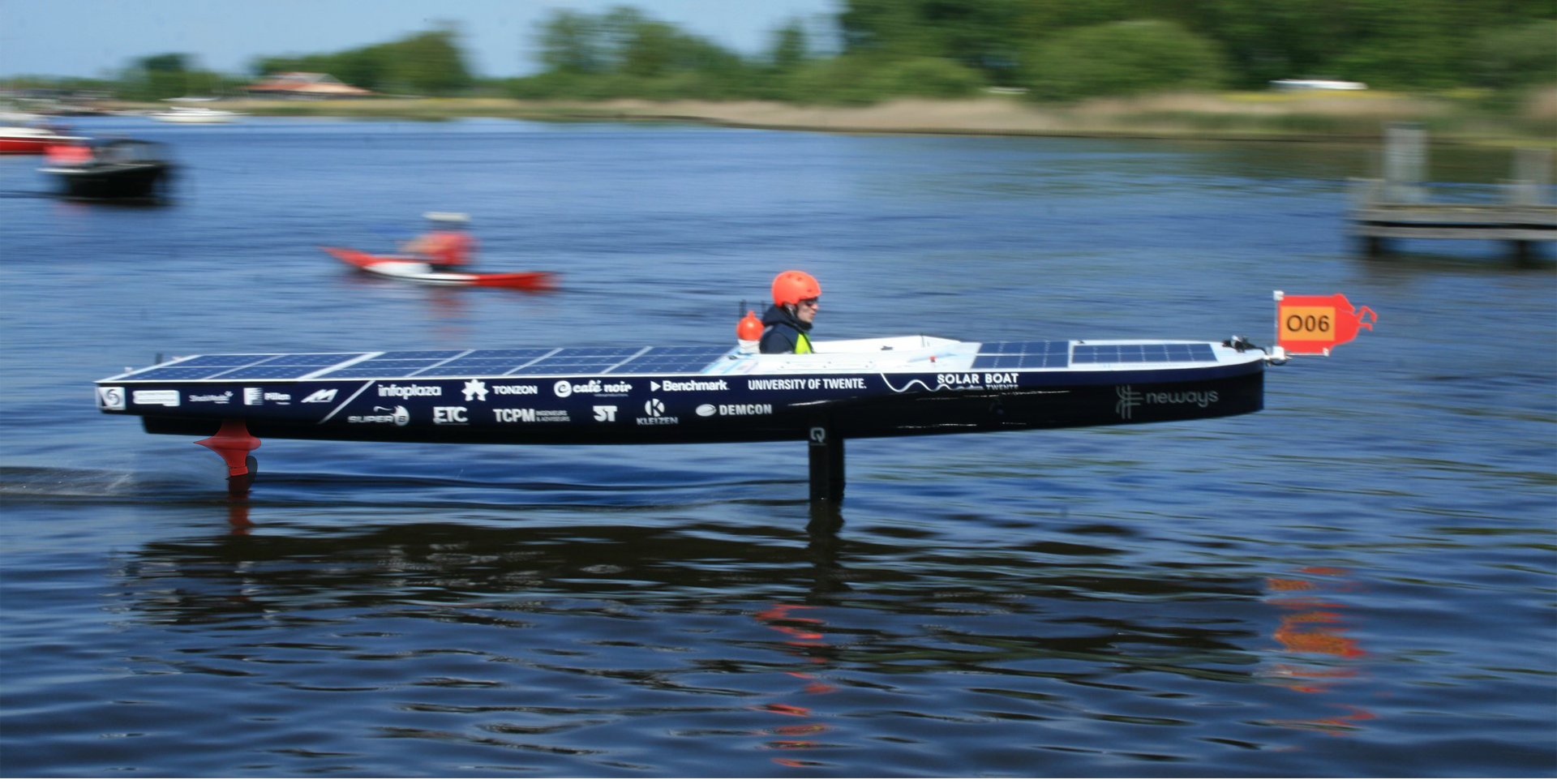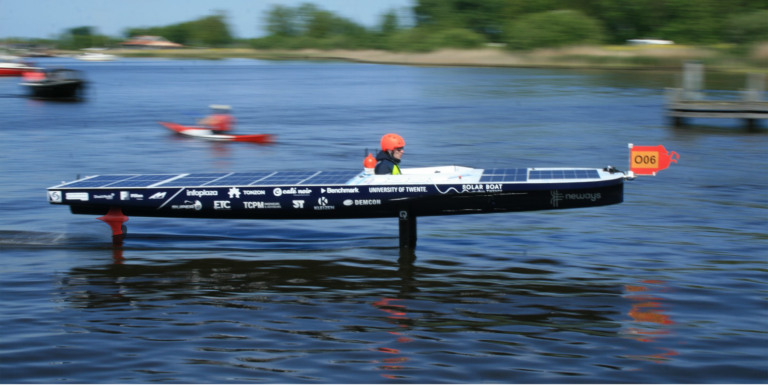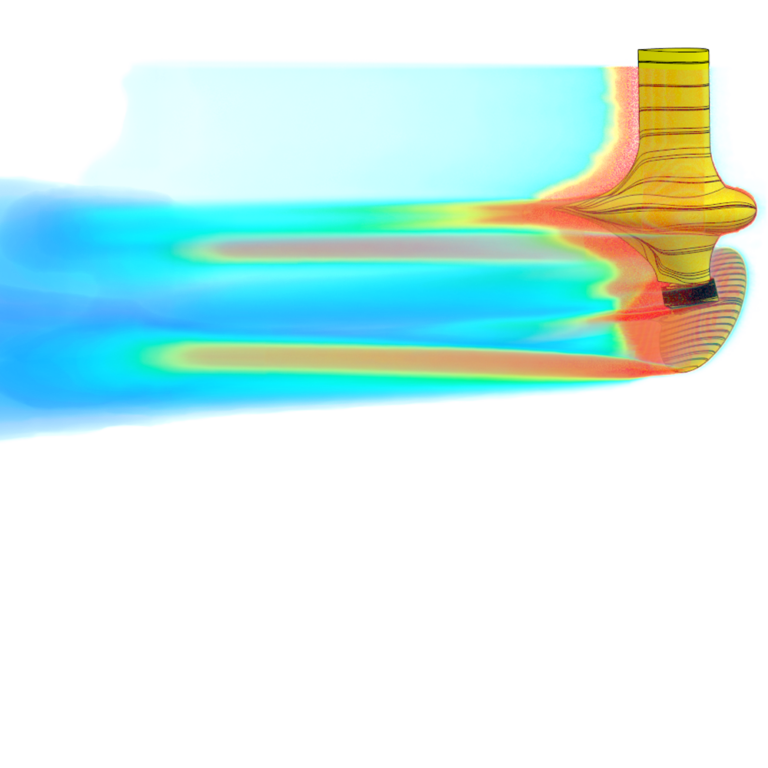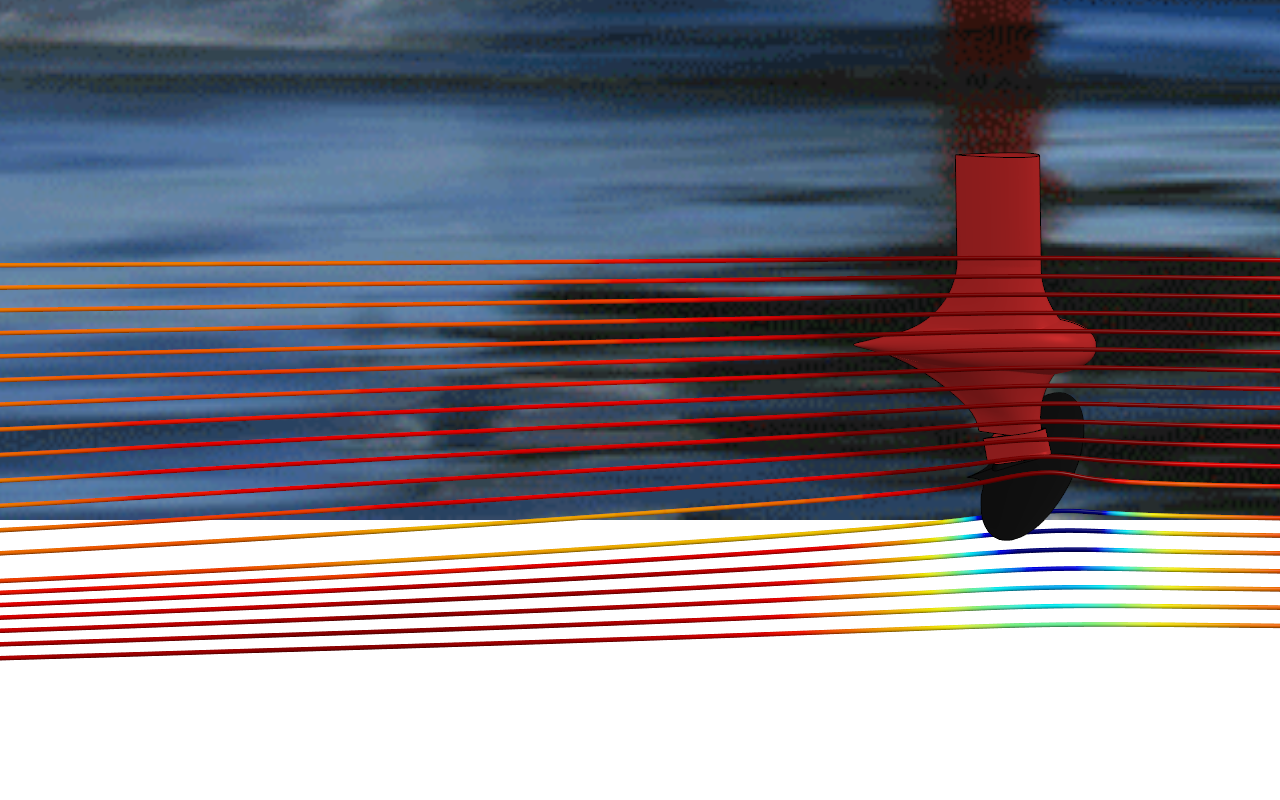hydrofoils for Solar Boat Twente.
Hydrofoils for Solar Boat Twente
Solar Boat Twente is a student team from Enschede, consisting of 21 multidisciplinary students from the University of Twente and Saxion University of Applied Sciences. The team designs and builds a solar-powered boat, to promote sustainable transport and to inspire the maritime sector with their innovations.
Goal of the team
Solar Boat Twente strives to make the most efficient boat possible, which means that the energy losses of the boat must be minimised. One of the biggest sources of energy loss is water resistance, called drag. To minimise drag, the boat uses hydrofoils: submerged wings that lift the entire boat upwards, out of the water. When lifted out of the water on hydrofoils a boat is said to be foiling. To correct for disturbances from waves and wind, an electronic control system is used. The height of the boat above the water is measured using sonar and the angles of the boat such as roll and pitch are measured using an inertial measurement unit. Based on these measurements, the angle of the hydrofoils is adjusted, changing the amount of lift each hydrofoil produces to remain stable.
The goal of this year’s team is to foil stably in all weather conditions. Specifically, the boat must be able to sustain the big waves in Monte Carlo at the Monaco Energy Boat Challenge. To foil stably, the whole hydrofoil system was redesigned: the foils were redesigned, as well as the way the foils are actuated. Two sets of foils were made, one set for high speeds and one for lower speeds.
The collaboration between Demcon multiphysics and Solar Boat Twente
To design the hydrofoils, the engineers of the Solar Boat Twente team initially made calculations to make an estimation of the performance of the hydrofoils. After finishing these calculations, an initial design was realized. However, realistic behaviour of the flow around the hydrofoils is not easy to predict using the current empirical models. This is where the expertise of Demcon multiphysics in the field of flow analysis comes in.
Demcon multiphysics helped the team by performing computational fluid dynamics (CFD): 3D flow calculations that are generally more accurate and provide more detail than hand calculations. Besides quantitative results, CFD also provides insight into the behaviour of the flow through visualization. The behaviour of flow was used for minimising the drag caused by the connection of the hydrofoils to the struts (the struts are the elements that connect the hydrofoil to the hull). On top of that, CFD analysis was used to verify whether the lifting behaviour of the designed foils was sufficient. Once the final design was verified, the production of the foils was set into motion. The performance of the hydrofoils was tested by foiling on the Twentekanaal. Indeed, the hydrofoils behave in the same manner as predicted by the CFD analysis.
Due to the accurate analyses, the boat can foil stably on the Twentekanaal, increasing efficiency and top speed of the boat. These new hydrofoils allowed the boat to foil stably for 50 kilometres in the endurance race of the national championship in Akkrum, finishing third and the team won the New Energy regatta in Enkhuizen.


Photo above: Ceto
Photo right: Hydrofoil with flow lines
The design seen in the figure on the right is the final design with a CFD simulation. This simulation is performed with our rather new application STAR-CCM+ from Simcenter .
About our expertise
During this project we applied our expertise of fluid flow
More information
For more information, please contact + 31 (0)88 11 52 000, multiphysics@demcon.com.
Or visit the website from Solar Boat Twente Solar Boat Twente | Universiteit Twente Enschede


